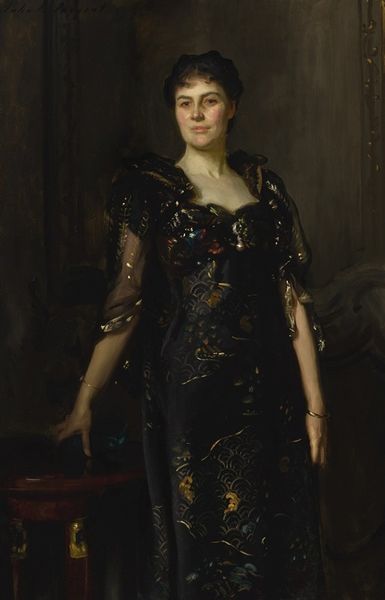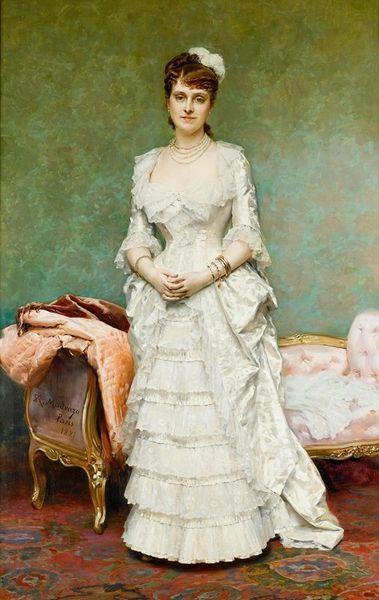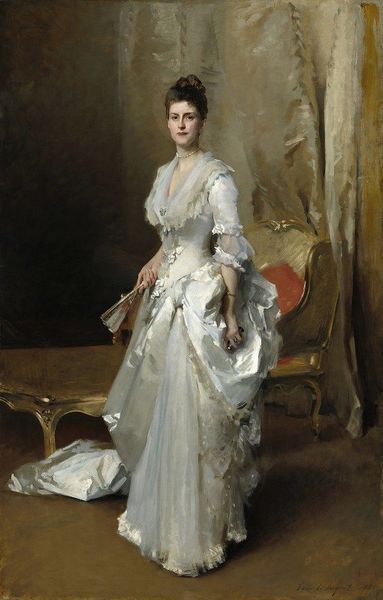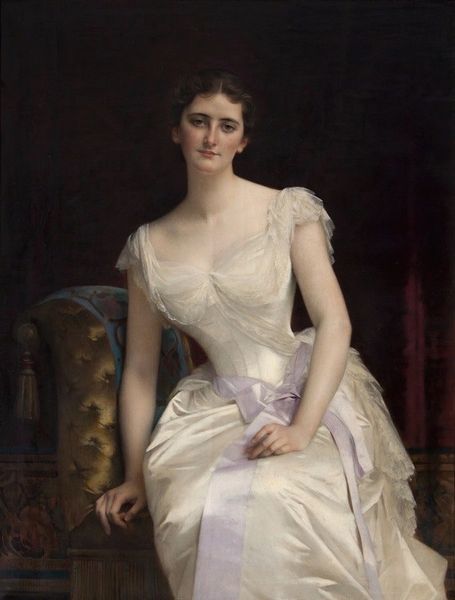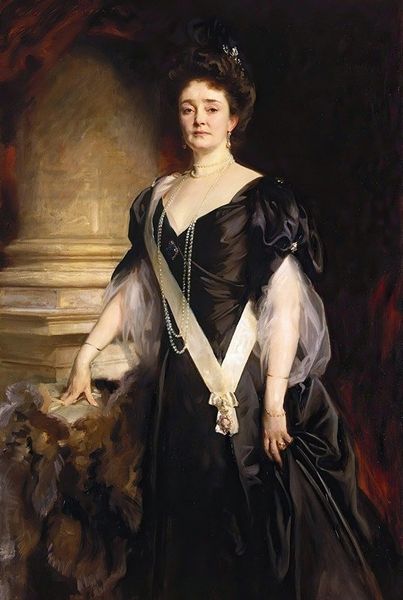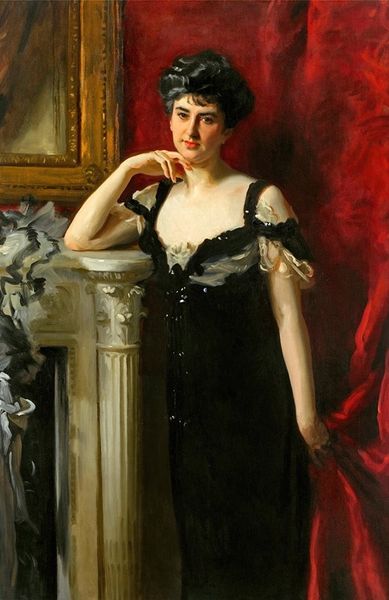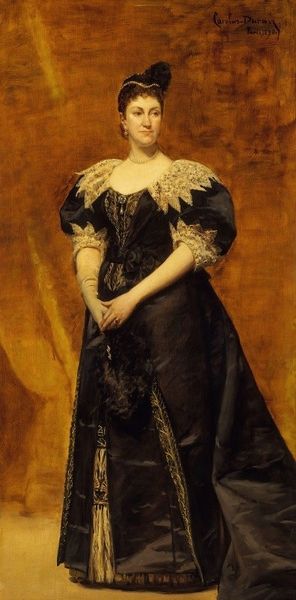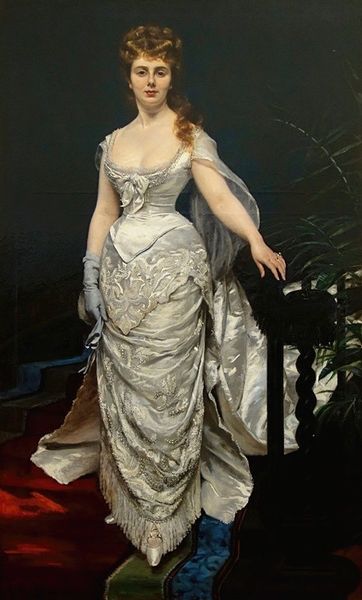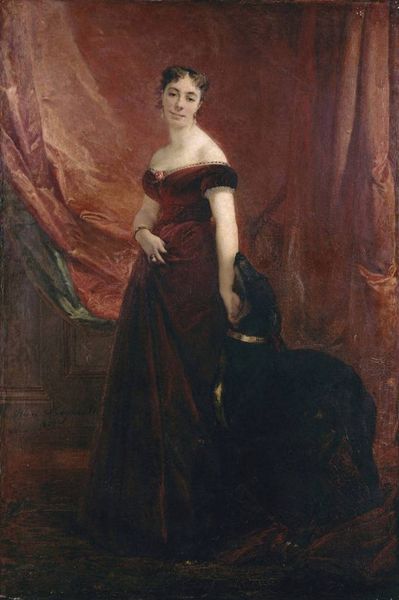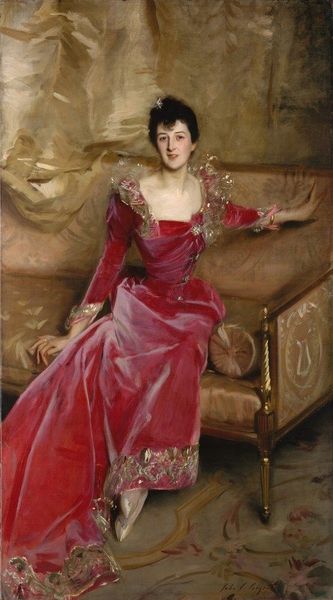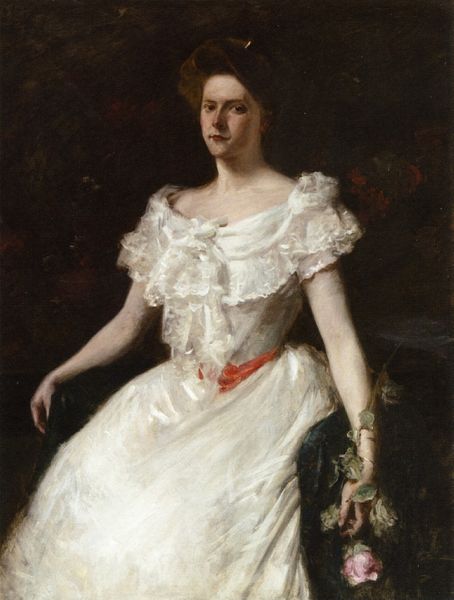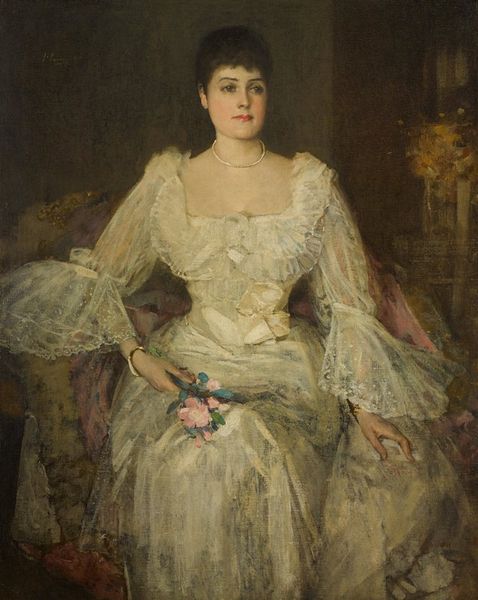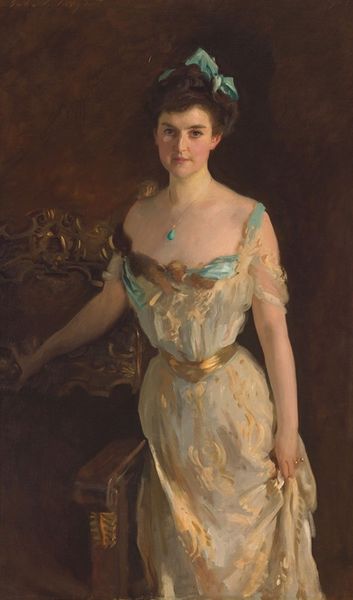
Copyright: Public Domain: Artvee
Curator: This is Raimundo de Madrazo's "Portrait de Madame Isaac Hirsch Kann, née Koenigswarter," completed in 1885 using oil paint. Editor: It exudes a sense of quiet dignity. The somber color palette really focuses your attention on her expression. Is there more to this choice of dress than simply fashion? Curator: Certainly. The dark dress, while fashionable, speaks to the expectations of women of the era—especially wealthy, married women—who were supposed to project a composed image of respectability. It’s less about personal flair and more about social positioning. Editor: It feels… constricting, both literally and figuratively. Is this darkness reflective of her perceived role in society? It seems that women in the late 19th century, irrespective of their socio-economic position, faced increasing societal pressure and the enforcement of often-rigid gender roles. I would hazard a guess that there's a link to the social realities of gender. Curator: You're hitting on a very interesting point about the imposed darkness. This style was particularly sought after by newly affluent families aiming to assert their position in a relatively rigid social hierarchy. We should look, too, at how this reflects the sitter's heritage: the Kann family were prominent Jewish philanthropists, and, I think, part of their attire choices would've served to soften anti-Semitic rhetoric. Editor: Interesting. It's all so… calculated. While it's a portrait, she's definitely playing a part, acting out social requirements of the time. So, even though the title identifies Madame Kann, she's really a cipher, representing societal constraints. It is also a stunning painting though, Madrazo certainly was very skilled with his application of oils. Curator: And skilled at revealing how deeply ingrained these cultural expectations can become! The portrait has power and enduring cultural weight because Madrazo makes such good work out of presenting archetypes that still linger today. Editor: I will never look at an aristocratic portrait the same way. The picture certainly prompts consideration of wider topics of social control and cultural belonging.
Comments
No comments
Be the first to comment and join the conversation on the ultimate creative platform.
